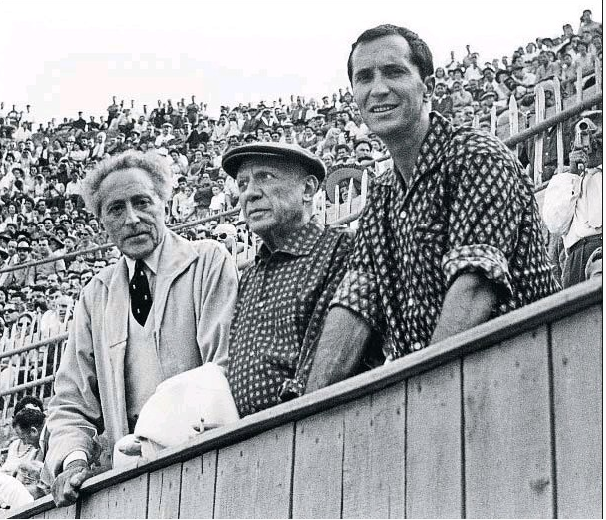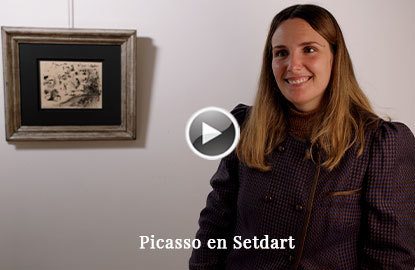Picasso bullfighting.

Ever since, as a child, he accompanied his father to see bullfights in his native Malaga, Picasso was fascinated by bullfighting. Such fascination will complement all of Picasso’s work, manifesting itself in emblematic series of aquatints and drawings.
The ink drawing that Setdart will be auctioned belongs to a period when Picasso spent long periods in Vallauris. In those years, the genius from Malaga was a regular at the Nimes bullfighting fair, which he attended for the first time in 1947, invited by his good friend André Castel, a bullfighting chronicler. “Nimeño” celebration then brought together important personalities from the world of art and literature. Celebrities such as the writer and ethnographer Michel Leiris and the painter Jean Cocteau came together in such an emblematic arena, establishing an intense friendship with Picasso that lasted throughout the years.

Picasso renewed his representation of bullfighting, drawing inspiration from the shows he attended. He immortalized countless moments of the bullfight in his drawings created with ink and displaying an energetic and audacious pulse: from when the bull paces placidly in the field until he leaves the square dragged by the mule gang, the paseo, the passes crutch, the luck of the rejón, the exit of the halters, the catching of the bullfighter, the flags, the picador …
The interest of the work in question is increased by the fact that Picasso did not limit himself to applying the ink in black with a brush, but he impregnated his own fingerprints in dye to later apply them on the paper. Using this resource, he made many of the characters’ faces, a vital and tremendously instinctive technique comparable to the personality of Picasso himself.
Certified by Picasso’s children, Claude and Maya, this drawing was gifted by the artist himself to André Castel. Later, it was part of the collection of the famous psychiatrist Dr. Sarró. Dated in Vallauris, on March 3, 1951, it has been reproduced, among other publications, in: the catalog of the exhibition “Bullfighting by Picasso, Dalí and Goya”, 2012, Prada; in “La Tauromaquia: Goya y Picasso and the Bullfight”, Selma Reuben Holo Verna Posever Curtis, Milwaukee Art Museum Publishing House, 1986, p.70.
PABLO PICASSO (Málaga, 1881 – Mougins, France, 1973). Creator of Cubism along with Braque, Picasso’s painting marked a turning point in the history of art. He began his studies in 1895, at the Provincial School of Fine Arts in Barcelona, and just two years later he held his first solo show, at the café “Els Quatre Gats”. After several short stays in Paris, Picasso settled permanently in the French capital in 1904. After his blue and pink periods, developed in the early years of the century, the painter began his geometrical tests in 1906, during a stay in Lleida. A year later he began to paint “The young ladies of Avinyó street”, and in 1909 he came into contact with Braque and his cubist period began. During the second decade he developed his classical stage, and made his famous sets for Diaghilev’s Russian ballets. In 1936 he was appointed director of the Prado Museum by the Government of the Spanish Republic, and a year later he painted the “Guernica”. The definitive international recognition will come in 1939, as a result of the retrospective that the MOMA in New York dedicates to him. During the following decades anthological exhibitions will be dedicated to him around the world, in Rome, Milan, Paris, Cologne and New York, among many other cities. It is represented in the most important museums around the world, such as the Metropolitan, the MOMA and the Guggenheim in New York, the Hermitage in Saint Petersburg, the National Gallery in London or the Reina Sofía in Madrid.


